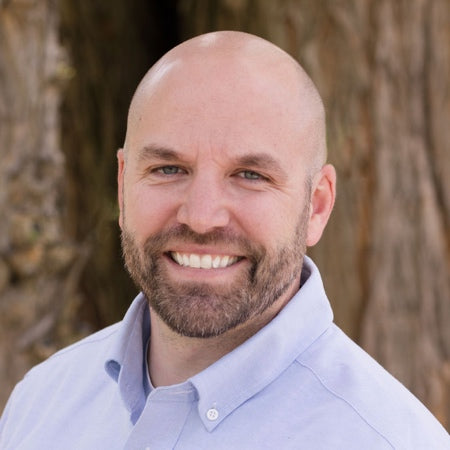How to walk out of (online) church
The build-up was the perfect storm.
The weather had been terrible for days, but Sunday morning was clear and sunny and the kids were bursting to get outside and play. They knew we would be tuning in to our church’s first attempt at a full livestream (music, prayers, sermon), but were anxious to be done and get on with the day.
The service went well. We watched together, attentively and interactively. But as soon as the benediction was given, I grabbed the remote (in my defense, not wanting them to turn on another show!) and powered down the TV. We all started towards the door, ready to scatter outside and enjoy the sunshine.
But I knew it as soon as I hit the power button (in fact, as I hit the button): I was subtly training myself and my family, the four children especially, to ‘switch off’ from church, to leave church the wrong way.
To be fair, this problem isn’t unique to livestreamed living-room church. We can have the same leave-it-behind mentality when leaving our church buildings on a Sunday morning. But the change from walking by dozens of fellow church-goers when leaving church, to simply clicking off the TV when we ‘leave’, makes the dilemma more acute.
When is church over?
So how can we end our formal time around God’s word on Sunday in a way that doesn’t promote powering off from the Word and God’s people? In Tony Payne’s How to Walk into Church, he recommends a mindshift from consuming church to full participation. This includes changing our thinking that church ‘finishes’ when the benediction is given or the last song is sung.
When we’re together, we should “let the word dwell amongst us richly” after the formal meeting time by making a point to find someone and discuss a point of the sermon. You could ask, “I found the part about how we rose with Jesus in his resurrection interesting. What struck you?” Or, you could find a dear older saint, and as you walk them out you could ask, “What could I be praying for you this week? Is there anything you need?”
See, church isn’t over just because you are allowed to leave without being rude. Church is the gathering of God’s people, and as long as you are gathered, church is happening. Even after the final song.
But how does that work in our current environment?
What do we change?
May I suggest applying the same helpful wisdom from Tony’s book to our living room services? When the device is switched off, start asking “Who can I continue ‘churching’ with?” Start with those around you in your home, but then think a step further. Who else can I continue speaking the word to/with?
My friend Craig Glassock from Vinegrowers suggests a simple and practical way forward: prayerfully consider one person from your congregation that you could call within the hour after you power down and ask these three questions:
- How are you doing?
- What was one thing from the sermon that challenged or encouraged you? (Perhaps share the answer to that question first to kick it off.)
- What is one thing I could pray for you in the upcoming week?
It doesn’t need to be complicated. Nor does it need to be long; sincerity and brevity are important tools and boundaries as you start this habit.
More ideas
I encourage you to be creative and find ways that this could work for you, your family and your church.
- If you’re a ‘people person’ or have plenty of time on your hands, reach out to several people in this way.
- If you have children, involve the whole family in a call to grandparents or another family from church. Have the children illustrate or write out a verse from the service and put it in the mail to someone.
- If you are new to a congregation, ask your pastor for names of church members who are alone and could use a friendly conversation.
- Think of someone who might not attend church and tell them about your service. While we’re all trying something new, it’s a great time to invite someone to try it with you.
- And don't forget to walk into (online) church well!
Due to our current circumstances, it may be easier than ever to leave ‘church’ behind for the week—it only takes a click. But also thanks to our current circumstances, there’s no better time to make an effort to change our thinking and our habits. What better time than now, when we’re missing the fellowship of our Sunday gatherings, to establish routines of continuing church when the service is over by reaching out to others?









